“Global In-Memory Analytics Market to reach a market value of USD 9.6 Billion by 2031 growing at a CAGR of 18.9%”
The Global In-Memory Analytics Market size is expected to reach $9.6 billion by 2031, rising at a market growth of 18.9% CAGR during the forecast period.
The use of in-memory analytics gives manufacturers the ability to improve the efficiency of their supply chains, anticipate the failure of their equipment, and optimize their manufacturing processes. This is accomplished by analyzing data collected in real-time from sensors and linked devices. Thus, the manufacturing segment procured 18% revenue share in the market in 2023. The increasing focus on reducing downtime, minimizing costs, and enhancing product quality drives the demand for advanced analytics solutions in manufacturing. Additionally, integrating in-memory analytics with IoT platforms further enhances its value proposition for manufacturers.
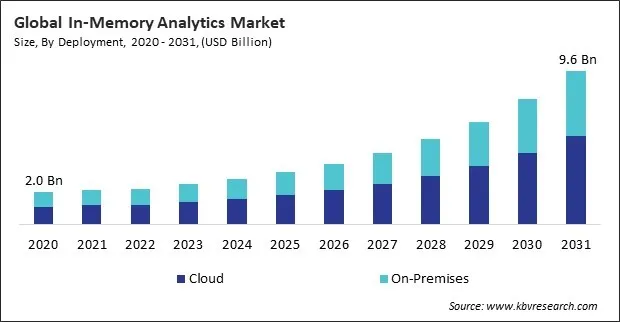
The major strategies followed by the market participants are Partnerships as the key developmental strategy to keep pace with the changing demands of end users. For instance, In June, 2024, IBM Corporation partnered with Telefónica Tech, a Spanish technology services provider, to deploy SHARK.X, an open, hybrid, and multi-cloud platform designed to enhance AI, data management, and analytics capabilities for businesses. Additionally, In May, 2023, SAP SE collaborated with Intel, an American technology company, to boost the scalability and security of SAP software in the cloud using 4th Gen Intel® Xeon® processors. This collaboration aims to improve processing speeds, reduce CPU power usage, and enhance scalability for SAP customers globally.
Based on the Analysis presented in the KBV Cardinal matrix; Microsoft Corporation and Google LLC are the forerunners in the In-Memory Analytics Market. In May, 2023, Google Cloud strengthened its partnership with Informatica, integrating Informatica's Intelligent Master Data Management (MDM) SaaS on Google Cloud. This solution offers businesses a unified, accurate data environment for enhanced decision-making and operational efficiency. Companies such as Amazon Web Services, Inc., Oracle Corporation, IBM Corporation are some of the key innovators in In-Memory Analytics Market.
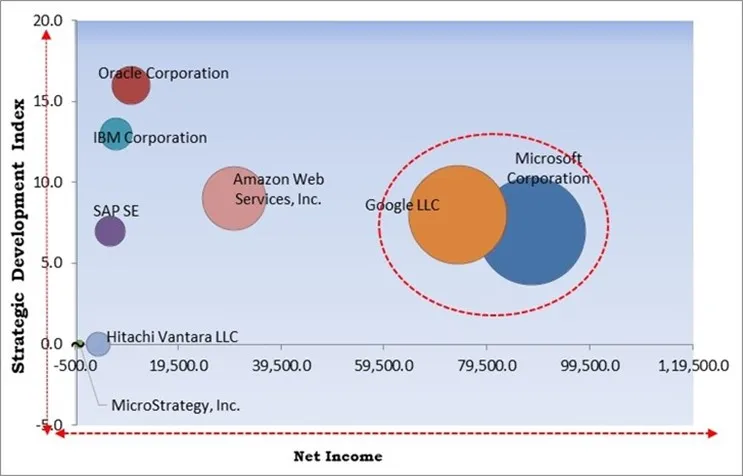
Iin-memory analytics supports the growing demand for IoT applications, which generate massive data streams from billions of connected devices. For instance, the manufacturing sector produces an estimated 1 petabyte of data daily from industrial IoT sensors monitoring equipment performance. In-memory analytics allows manufacturers to process this data in real-time, identifying potential issues and preventing costly downtime. Companies like General Electric leverage in-memory solutions to optimize production lines and enhance operational efficiency. Hence, these developments will aid in the expansion of the market.
Hardware and software integration improvements have optimized the performance of in-memory analytics platforms. For example, advancements in parallel processing and distributed computing frameworks have enabled the handling of complex analytical workloads with unprecedented speed and accuracy. These innovations allow organizations to process massive datasets instantaneously, driving smarter decision-making and enhancing overall operational efficiency. Thus, as technology evolves, these innovations will further expand the scope and impact of in-memory analytics across various domains.
legacy systems often have rigid architectures and limited flexibility, making it challenging to accommodate the real-time processing capabilities of in-memory analytics. This challenge can be further exacerbated by the absence of standardized integration frameworks for bridging the distance between old and new systems, necessitating customized solutions that further extend project timelines and costs. For organizations dependent on legacy systems, implementing in-memory analytics often becomes a trade-off between modernizing their infrastructure and bearing the associated risks and costs. Thus, this complexity is a deterrent, slowing the adoption rate of in-memory analytics in industries with prevalent legacy systems.
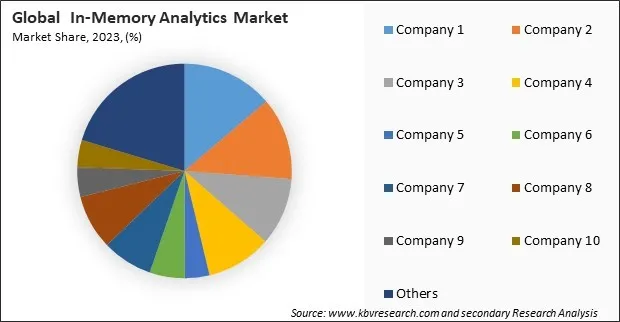
The leading players in the market are competing with diverse innovative offerings to remain competitive in the market. The above illustration shows the percentage of revenue shared by some of the leading companies in the market. The leading players of the market are adopting various strategies in order to cater demand coming from the different industries. The key developmental strategies in the market are Partnerships, Collaborations and Agreements.


Based on deployment, the market is bifurcated into cloud and on-premises. The on-premises segment procured 43% revenue share in the market in 2023. Strictly regulated industries, such as healthcare, finance, and government, frequently opt for on-premises solutions to guarantee data sovereignty and satisfy rigorous compliance standards. The need for tailored infrastructure, minimal latency, and complete control over analytics workflows makes on-premises deployments appealing to businesses with unique operational needs.
On the basis of organization size, the market is classified into large enterprises and SMEs. The large enterprises segment acquired 72% revenue share in the market in 2023. Large enterprises prioritize real-time analytics to gain actionable insights, improve decision-making, and maintain a competitive edge. They are more inclined to adopt in-memory analytics because of their capacity to invest in high-speed infrastructure and skilled professionals. Additionally, the adoption of in-memory analytics in this sector is further fueled by the necessity for advanced analytics to optimize business processes, enhance consumer experiences, and streamline operations.
By vertical, the market is divided into BFSI, retail & e-commerce, manufacturing, government & defense, healthcare, telcos & ITES, and others. The retail & e-commerce segment garnered 21% revenue share in the market in 2023. In-memory analytics helps businesses analyze purchasing behaviors, track trends, and deliver personalized recommendations, improving customer satisfaction and loyalty. The surge in online shopping, dynamic pricing requirements, and omnichannel retail strategies have made real-time analytics indispensable for this sector. Retailers and e-commerce platforms are adopting in-memory analytics to stay agile and responsive in an intensely competitive market.
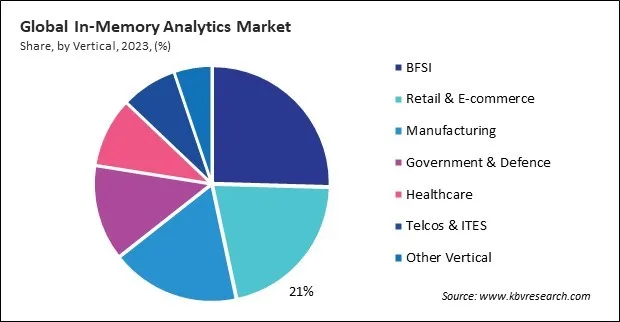
Based on application, the market is segmented into operational optimization, marketing management, real-time analysis & decision making, customer experience management, design & innovation, and others. The operational optimization segment acquired 26% revenue share in the market in 2023. Organizations across industries leverage in-memory analytics to streamline operations, identify bottlenecks, and optimize resource utilization. The ability to process real-time data from various sources, such as IoT devices and enterprise systems, empowers companies to make proactive adjustments and minimize downtime.
Free Valuable Insights: Global In-Memory Analytics Market size to reach USD 9.6 Billion by 2031
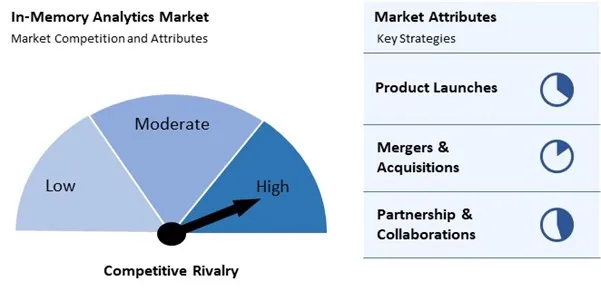
The in-memory analytics market is highly competitive, driven by a mix of established providers and specialized firms offering diverse solutions. The adoption of cloud-based platforms has enhanced scalability and flexibility, while advancements in artificial intelligence and machine learning are becoming key differentiators. These technologies enable real-time decision-making and predictive analytics, meeting the evolving needs of various industries. The market’s dynamic nature is shaped by innovation and increasing demand for faster, more advanced analytical capabilities, fostering intense competition among players.
Region-wise, the market is analyzed across North America, Europe, Asia Pacific, and LAMEA. The North America segment garnered 38% revenue share in the market in 2023. The in-memory analytics market is currently led by the North America segment, which is primarily propelled by the widespread adoption of advanced analytics solutions in industries such as healthcare, BFSI, and IT & telecom. The region's mature technological infrastructure and a strong focus on digital transformation and innovation create a conducive environment for adopting in-memory analytics.
| Report Attribute | Details |
|---|---|
| Market size value in 2023 | USD 2.5 Billion |
| Market size forecast in 2031 | USD 9.6 Billion |
| Base Year | 2023 |
| Historical Period | 2020 to 2022 |
| Forecast Period | 2024 to 2031 |
| Revenue Growth Rate | CAGR of 18.9% from 2024 to 2031 |
| Number of Pages | 319 |
| Number of Tables | 493 |
| Report coverage | Market Trends, Revenue Estimation and Forecast, Segmentation Analysis, Regional and Country Breakdown, Competitive Landscape, Market Share Analysis, Porter’s 5 Forces Analysis, Company Profiling, Companies Strategic Developments, SWOT Analysis, Winning Imperatives |
| Segments covered | Deployment, Organization Size, Vertical, Application, Region |
| Country scope |
|
| Companies Included | SAP SE, IBM Corporation, Microsoft Corporation, Oracle Corporation, Hitachi Vantara LLC (Hitachi Ltd.), Google LLC (Alphabet Inc.), SAS Institute Inc., Amazon Web Services, Inc. (Amazon.com, Inc.), MicroStrategy, Inc., Software AG |
By Deployment
By Organization Size
By Vertical
By Application
By Geography
The Market size is projected to reach USD 9.6 billion by 2031.
Exponential Data Generation Across Industries are driving the Market in coming years, however, High Cost of Implementation restraints the growth of the Market.
SAP SE, IBM Corporation, Microsoft Corporation, Oracle Corporation, Hitachi Vantara LLC (Hitachi Ltd.), Google LLC (Alphabet Inc.), SAS Institute Inc., Amazon Web Services, Inc. (Amazon.com, Inc.), MicroStrategy, Inc., Software AG
The expected CAGR of this Market is 18.9% from 2024 to 2031.
The BFSI segment is leading the Market by Vertical in 2023; thereby, achieving a market value of $2.3 billion by 2031.
The North America region dominated the Market by Region in 2023; thereby, achieving a market value of $3.5 billion by 2031.
Our team of dedicated experts can provide you with attractive expansion opportunities for your business.
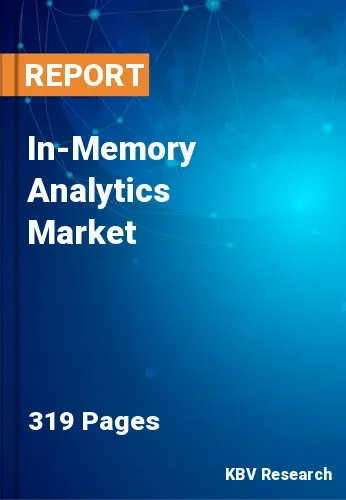
 Drivers
Drivers
 Restraints
Restraints
 Opportunities
Opportunities
 Challenges
Challenges
